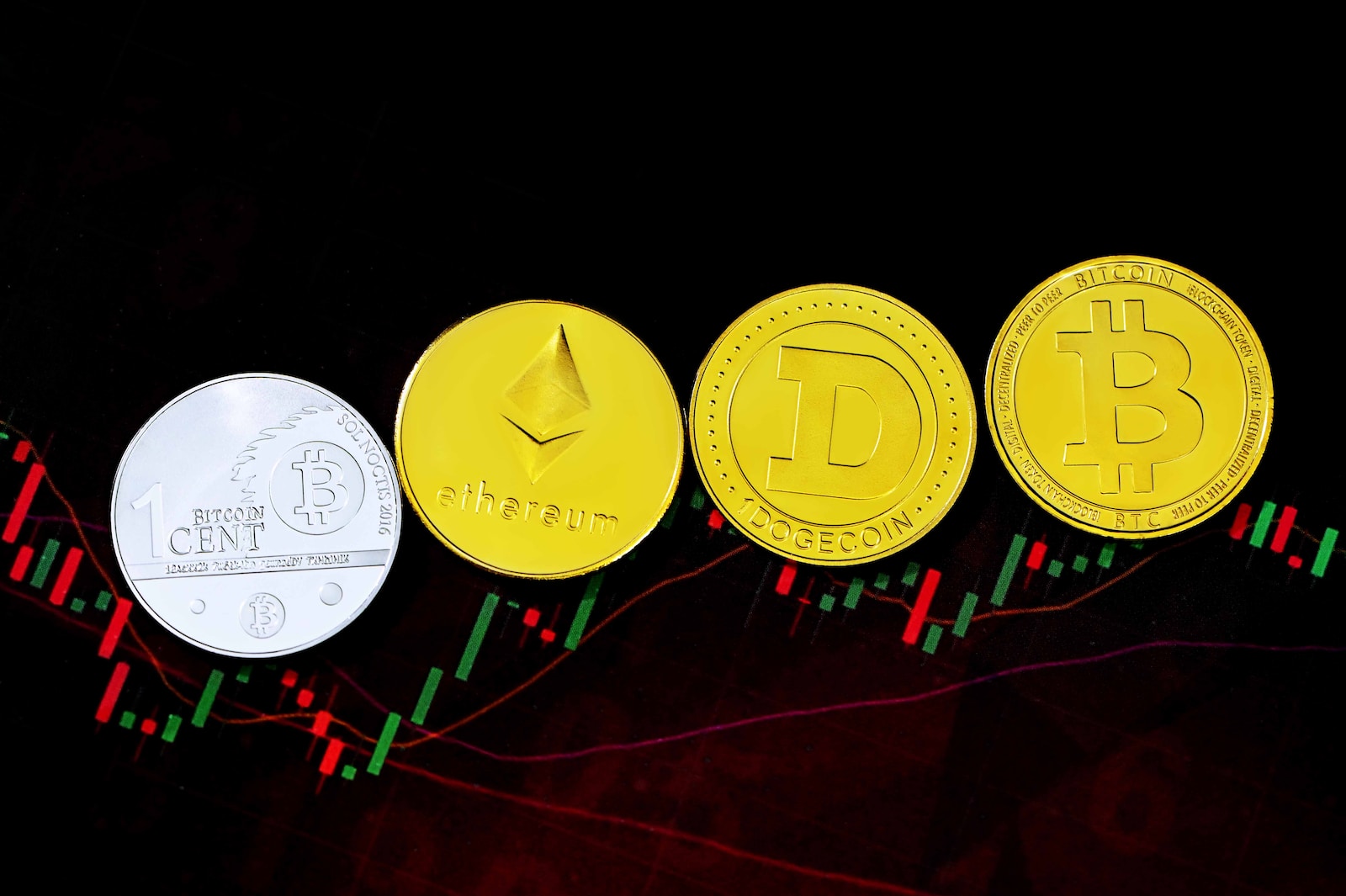Investing in cryptocurrencies has become increasingly popular in recent years. As digital assets like Bitcoin and Ethereum continue to gain traction, many individuals are looking for ways to enter the cryptocurrency market and capitalize on its potential. One of the key aspects of cryptocurrency trading is choosing the right cryptocurrency exchange to facilitate your transactions. In this article, we will explore the importance of selecting the best cryptocurrency exchange for your trading needs and provide you with a comprehensive guide on how to navigate the cryptocurrency trading landscape.
What is cryptocurrency trading and how does it work?
What is cryptocurrency trading?
Cryptocurrency trading refers to the act of speculating on cryptocurrency price movements through buying and selling digital currencies on a trading platform. Unlike traditional financial markets, cryptocurrencies are decentralized and operate on blockchain technology, which ensures transparency and security in transactions.
How do cryptocurrency markets work?
Cryptocurrency markets work similarly to other financial markets, where buyers and sellers come together to exchange assets. However, in the case of cryptocurrencies, the trading is done exclusively with digital currencies such as Bitcoin, Ethereum, and other altcoins. These transactions take place on cryptocurrency exchanges, which act as intermediaries between buyers and sellers.
How to trade cryptocurrencies: A beginner’s guide to buy and sell digital currencies
What is crypto trading?
Crypto trading is the process of buying and selling cryptocurrencies with the intention of making a profit. It involves analyzing market trends, identifying trading opportunities, and executing trades on a cryptocurrency exchange. The objective is to buy digital currencies at a lower price and sell them at a higher price, thereby making a profit.
How to trade cryptocurrency for beginners
If you’re new to cryptocurrency trading, here’s a step-by-step guide on how to get started:
- Educate yourself: Before diving into cryptocurrency trading, take the time to understand the fundamental concepts and principles behind cryptocurrencies. Familiarize yourself with terms like blockchain, wallet, token, and holding.
- Choose a cryptocurrency exchange: Research and compare different cryptocurrency exchanges to find the one that suits your needs. Consider factors such as security, fees, liquidity, and available trading pairs.
- Create an account: Once you have selected a cryptocurrency exchange, sign up for an account and complete the necessary verification process.
- Deposit funds: Deposit funds into your trading account using either fiat currency or other cryptocurrencies, depending on the exchange’s supported options.
- Start trading: With funds in your trading account, you can now start trading cryptocurrencies. Use the exchange’s trading platform to place buy and sell orders based on your analysis and trading strategy.
- Monitor your trades: Keep a close eye on your trades and the overall market to make informed decisions. It’s essential to stay updated with market news and price movements.
- Practice risk management: Set stop-loss orders to limit potential losses and use proper risk management techniques to protect your capital.
- Withdraw profits: When you have made profits from your trades, consider withdrawing some of the gains to secure your earnings.

Lowest Trading Costs for Popular Crypto Markets*
Why trade cryptos as CFDs with FOREX.com?
FOREX.com offers one of the lowest trading costs for popular cryptocurrency markets. By trading cryptocurrencies as CFDs (contracts for difference), you can speculate on price movements without owning the underlying asset. This allows for greater flexibility and lower trading costs.
Trading vs. owning crypto
When it comes to cryptocurrencies, there are two main approaches: trading and owning. Trading cryptocurrencies involves buying and selling digital currencies with the aim of making a profit. On the other hand, owning cryptocurrencies involves holding them in a digital wallet for long-term investment purposes. Both approaches have their advantages and risks, and it’s important to assess your investment goals and risk tolerance before deciding which strategy to adopt.
Cryptocurrencies available for trading
There are many cryptocurrencies available for trading, each with its own unique features and potential. Some of the most popular cryptocurrencies include Bitcoin, Ethereum, Litecoin, Ripple, and Bitcoin Cash. However, the cryptocurrency market is constantly evolving, and new digital currencies are being introduced regularly. It’s important to stay informed about the latest developments in the market to identify promising trading opportunities.
Cryptocurrency Explained With Pros and Cons for Investment
What is Cryptocurrency?
Cryptocurrency is a digital or virtual form of currency that uses cryptography for secure financial transactions, control the creation of additional units, and verify the transfer of assets. It operates independently of a central bank and is decentralized, making it resistant to government interference or manipulation.
Understanding Cryptocurrencies
To understand cryptocurrencies, it’s important to grasp the concept of blockchain technology. Blockchain is a decentralized ledger that records all transactions across a network of computers. This technology ensures transparency, security, and immutability. Cryptocurrencies leverage blockchain technology to enable secure and transparent financial transactions.
Types of Cryptocurrency
There are many types of cryptocurrencies available in the market, each with its own unique features and purposes. Bitcoin was the first cryptocurrency and remains the most popular and valuable one. Other notable cryptocurrencies include Ethereum, Ripple, Litecoin, and Bitcoin Cash. Each cryptocurrency serves a specific function within its respective blockchain network.
Are Cryptocurrencies Legal?
The legality of cryptocurrencies varies from country to country. While some countries have embraced cryptocurrencies and created a regulatory framework for their use, others have imposed restrictions or outright banned them. It’s important to be aware of the legal and regulatory landscape of your jurisdiction before engaging in cryptocurrency trading or investment.
Are Cryptocurrencies Safe Investments?
Investing in cryptocurrencies can be highly profitable but also carries risks. The cryptocurrency market is highly volatile and subject to rapid price fluctuations. Additionally, the lack of regulations and oversight in some jurisdictions can leave investors vulnerable to scams and fraud. It’s crucial to conduct thorough research, diversify your portfolio, and only invest what you can afford to lose.
Advantages and Disadvantages of Cryptocurrency
Like any other investment, cryptocurrencies have their advantages and disadvantages. Some of the advantages include decentralization, security, transparency, and potential for high returns. On the other hand, cryptocurrencies are also highly volatile, susceptible to market manipulation, and can pose cybersecurity risks. It’s important to consider both sides of the coin before entering the cryptocurrency market.
How Do You Buy Cryptocurrencies?
There are several ways to buy cryptocurrencies, including:
- Through cryptocurrency exchanges: Cryptocurrency exchanges allow you to buy cryptocurrencies using fiat currency or other cryptocurrencies. Examples of popular cryptocurrency exchanges include Binance, Coinbase, and Kraken.
- Peer-to-peer (P2P) trading: P2P platforms connect buyers and sellers directly, allowing for direct transactions without the need for intermediaries.
- Bitcoin ATMs: Some cities have Bitcoin ATMs where you can buy cryptocurrencies using cash or debit cards.
- OTC markets: Over-the-counter (OTC) markets enable large-scale trading of cryptocurrencies outside of traditional exchanges.
What Is the Point of Cryptocurrency?
The main purpose of cryptocurrencies is to provide an alternative form of currency that is secure, decentralized, and immune to government control or inflation. Cryptocurrencies offer fast and efficient peer-to-peer transactions, enable financial inclusion for the unbanked, and promote innovation in the financial sector through blockchain technology.
What Are the Most Popular Cryptocurrencies?
As mentioned earlier, Bitcoin remains the most popular and valuable cryptocurrency. Ethereum, Ripple, Litecoin, and Bitcoin Cash are also among the most popular digital currencies, each with its own unique features and potential. However, the cryptocurrency market is highly dynamic, and new cryptocurrencies with innovative concepts and technologies constantly emerge.
How does cryptocurrency trading work?
What moves cryptocurrency markets?
Several factors can influence cryptocurrency markets and cause price movements. These include:
- Market demand and supply: The basic economic principles of supply and demand play a significant role in determining cryptocurrency prices.
- News and events: News regarding regulatory developments, technological advancements, partnerships, or security breaches can greatly impact cryptocurrency markets.
- Market sentiment: Investor sentiment and market psychology can lead to significant price fluctuations in the cryptocurrency market.
- Trading volume: The trading volume of a specific cryptocurrency can affect its market liquidity and price stability.
What is the spread in cryptocurrency trading?
The spread in cryptocurrency trading refers to the difference between the buy price and sell price of a particular cryptocurrency. It represents the cost of trading and is influenced by factors such as market liquidity, trading volume, and the exchange’s fee structure.
What is leverage in cryptocurrency trading?
Leverage allows traders to multiply their exposure to a particular cryptocurrency without the need for additional capital. It involves borrowing funds from the exchange or other traders to increase the size of your position. While leverage can amplify profits, it also magnifies losses, so it should be used with caution.
What is margin in cryptocurrency trading?
Margin trading in cryptocurrency involves borrowing funds to trade larger positions than your account balance allows. It allows traders to potentially increase their profits but also carries a higher risk of losses. Margin trading requires a margin account, which is provided by cryptocurrency exchanges.
What is a pip in cryptocurrency trading?
A pip in cryptocurrency trading refers to the smallest unit by which the price of a particular cryptocurrency can change. It stands for “percentage in point” and is commonly used in forex and cryptocurrency trading to measure price movements.

Basics of cryptocurrency trading
To become a successful cryptocurrency trader, it’s essential to understand the basics of trading. Here are some key concepts to grasp:
- Market price: The current price at which a cryptocurrency is being traded in the market.
- Trade size: The amount of cryptocurrency you are buying or selling in a single trade.
- Order types: The different types of orders you can place on a cryptocurrency exchange, such as market orders, limit orders, and stop-loss orders.
- Order book: A record of all buy and sell orders for a particular cryptocurrency on an exchange.
- Candlestick charts: Graphical representations of price movements over a specific time period, commonly used for technical analysis.
Structure of a crypto trade
A typical cryptocurrency trade consists of the following elements:
- Asset pair: The specific cryptocurrency trading pair you are trading, such as BTC/USD or ETH/BTC.
- Entry point: The price at which you enter the trade.
- Stop-loss level: The price at which you are willing to exit the trade to limit potential losses.
- Take-profit level: The price at which you are willing to exit the trade to secure your profits.
- Trade duration: The time period for which you plan to hold the trade.
Reading the markets
Market structure and cycles
Understanding market structure and cycles is crucial for successful cryptocurrency trading. Markets go through various phases, including accumulation, distribution, uptrend, and downtrend. By identifying these phases, traders can make more informed trading decisions.
Psychological cycles
Psychological cycles play a significant role in market movements. Investor sentiment, fear, and greed can heavily influence the psychology of market participants and cause price fluctuations. Being aware of these emotions can help traders navigate the market more effectively.
Technical analysis
Support and resistance
Support and resistance levels are key technical indicators used in cryptocurrency trading. Support levels represent price levels at which buy orders are expected to outweigh sell orders, causing prices to potentially reverse or bounce higher. Resistance levels, on the other hand, represent price levels at which sell orders are expected to outweigh buy orders, causing prices to potentially reverse or face downward pressure.
Trendlines
Trendlines are lines drawn on a chart to depict the direction and strength of a trend. They can be used to identify potential entry and exit points, as well as to determine the overall trend of a cryptocurrency.
Moving averages
Moving averages are commonly used in cryptocurrency trading to identify trends, confirm trend reversals, and generate trading signals. They provide a smoothed line on a chart that represents the average price over a specific period.
Chart patterns
Chart patterns, such as triangles, head and shoulders, and double bottoms, are graphical representations of price movements that can indicate potential trend reversals or continuation. Traders use these patterns to make predictions about future price movements.
Fundamental analysis
Developers
The skills and experience of the development team behind a cryptocurrency project are crucial factors to consider when conducting fundamental analysis. A strong and competent development team is more likely to deliver on their promises and produce a successful cryptocurrency.
Community
The size and engagement of a cryptocurrency’s community can indicate its popularity and potential for growth. A strong and supportive community can contribute to the adoption and success of a cryptocurrency.









